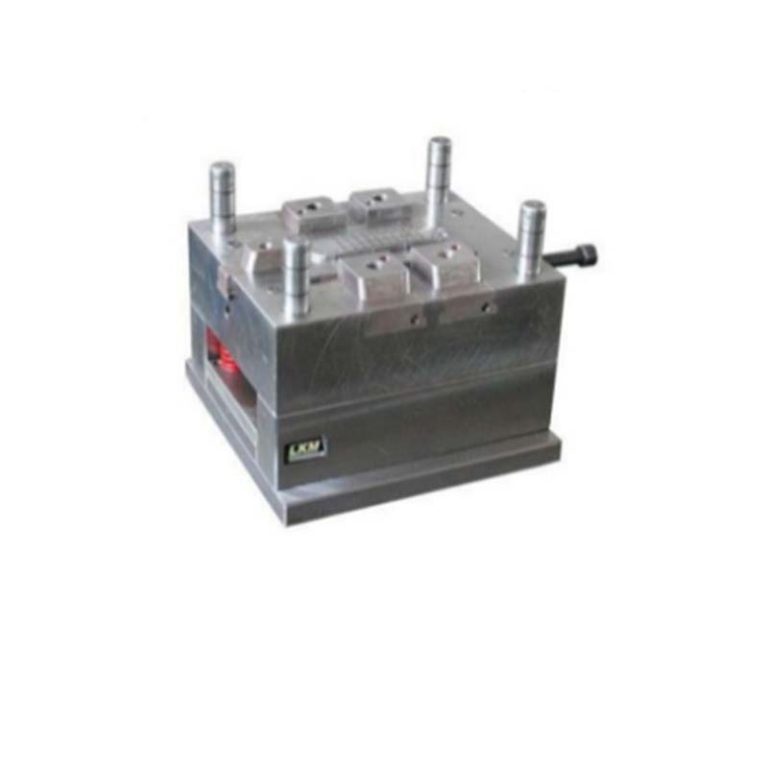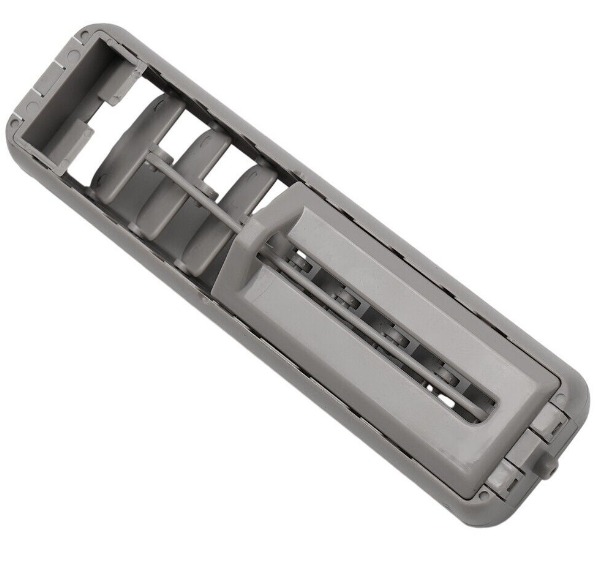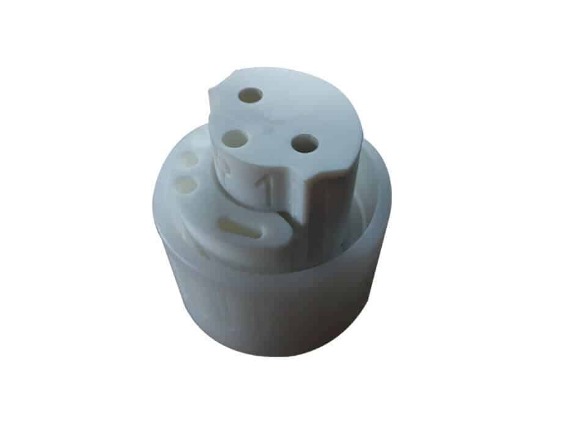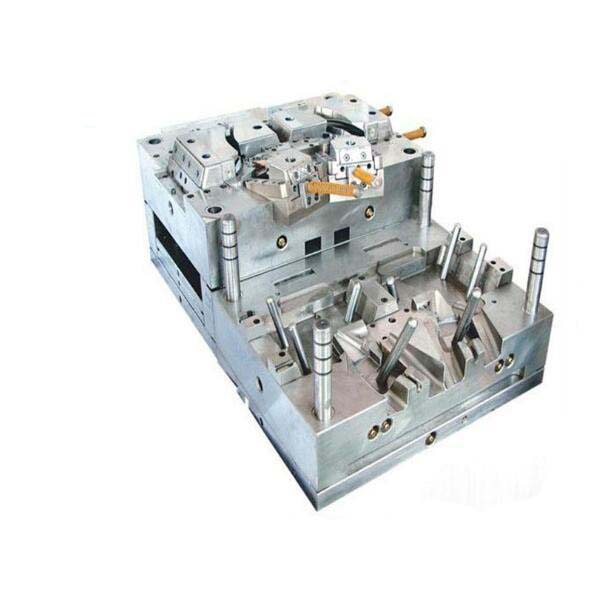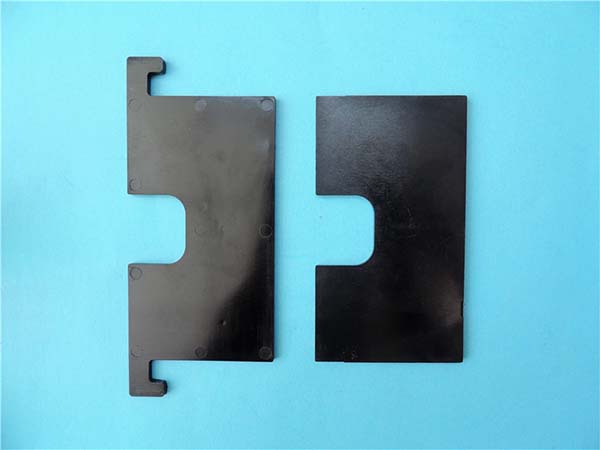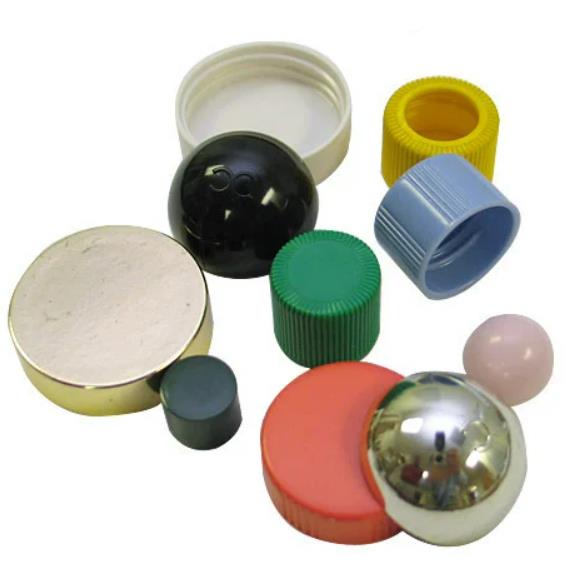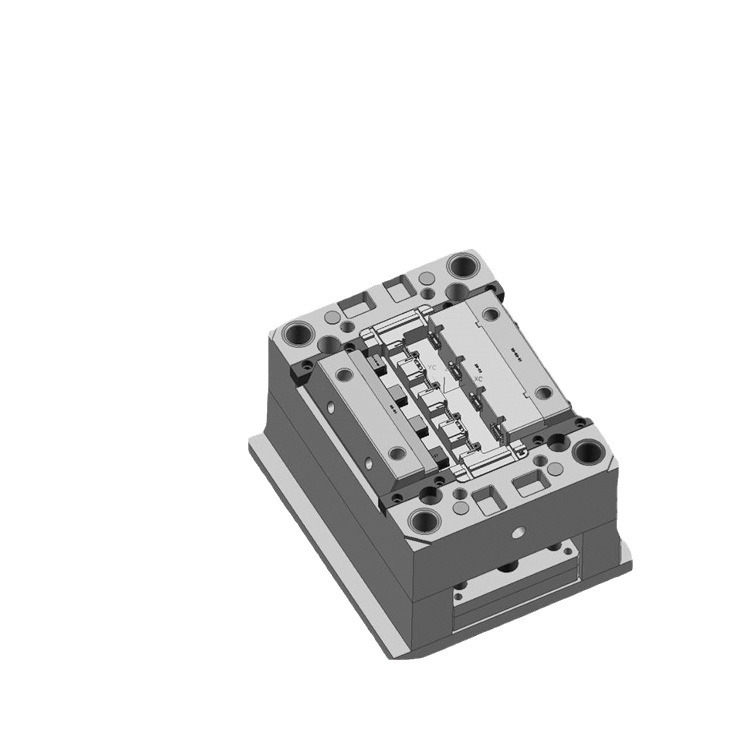Quality Assurance: The Cornerstone of Success
Quality is non - negotiable when it comes to injection molding. According to industry reports, on average, about 10 - 15% of production costs can be wasted due to defective products in injection molding processes without proper quality control. These defective products not only lead to direct material losses but also result in additional costs for rework, disposal, and potential loss of customers.
A reliable injection molding manufacturer should have a comprehensive quality control process in place. This starts from the very beginning - the inspection of raw materials. High - quality plastic pellets or other raw materials are crucial for the final product quality. For Yigu Technology example, checking the melt flow index, density, and moisture content of plastic pellets can prevent issues like inconsistent wall thickness, warping, or surface defects in the molded parts.
During the injection molding process, the manufacturer should use advanced equipment for real - time monitoring. Sensors can be installed on injection molding machines to monitor parameters such as injection pressure, temperature, and clamping force. Any deviation from the set values can be immediately detected and adjusted. For instance, if the injection pressure is too low, it may cause incomplete filling of the mold cavity, resulting in a defective product.
After the products are molded, a series of quality checks are essential. This includes dimensional inspection using precision measuring tools like coordinate measuring machines (CMMs). CMMs can accurately measure the length, width, height, and other dimensions of the molded parts to ensure they meet the design specifications. Visual inspection is also crucial to identify surface defects such as scratches, sink marks, or flash.
Moreover, a good injection molding manufacturer should hold relevant quality certifications. ISO 9001 is a globally recognized quality management system standard. Manufacturers with ISO 9001 certification are more likely to have well - defined quality management processes, from supplier management to production control and customer feedback handling. It ensures that the manufacturer adheres to strict quality requirements at every stage of the production process, providing customers with reliable quality assurance.
Cost - Effective Solutions: Balancing Quality and Price
Cost is a crucial factor when choosing an injection molding manufacturer. While it's tempting to go for the lowest - priced option, a more comprehensive approach is necessary to ensure long - term cost - effectiveness.
Initial Mold Costs
The cost of the injection mold is a significant upfront expense. A simple mold for a basic plastic part might cost a few thousand dollars, while a complex multi - cavity mold for a high - precision medical device component can cost hundreds of thousands of dollars. For example, a single - cavity mold for a common plastic toy could range from \(5,000 - \)10,000, depending on the complexity of the design and the materials used. Manufacturers with in - house mold - making capabilities often have an advantage here. They can better control the mold - making process, reduce lead times, and potentially offer more cost - effective solutions. According to industry data, in - house mold - making can sometimes cut mold costs by 20 - 30% compared to outsourcing mold production.
Unit Product Cost
The unit cost of each injection - molded part is influenced by several factors. Material costs play a large role. Different plastic resins have varying prices. For instance, commodity plastics like polyethylene (PE) and polypropylene (PP) are relatively inexpensive, with prices ranging from \(1 - \)3 per kilogram. In contrast, engineering plastics such as polycarbonate (PC) or acrylonitrile butadiene styrene (ABS) can cost \(3 - \)8 per kilogram. The manufacturer's production efficiency also impacts unit costs. High - speed injection molding machines with advanced automation can produce more parts in less time, reducing the labor cost per unit. A well - optimized production line can potentially reduce unit production costs by 10 - 15% compared to a less efficient one.
Cost - Saving Strategies
Optimizing Mold Design: A well - designed mold can reduce material waste and production cycle times. For Yigu Technology example, using conformal cooling channels in the mold design can decrease cooling times by up to 30%. This not only speeds up the production process but also reduces energy consumption, ultimately lowering costs.
Material Selection: Instead of always choosing the highest - performance material, consider the actual requirements of the product. A manufacturer can suggest alternative materials that meet the functional needs but are more cost - effective. For a non - critical consumer product, a less expensive plastic grade might be sufficient, potentially cutting material costs by 20 - 40%.
Batch Production: Generally, the cost per unit decreases as the production volume increases. This is because the fixed costs (such as mold costs) are spread out over more parts. For a batch of 10,000 parts, the unit cost might be \(1.50, while for a batch of 100,000 parts, the unit cost could drop to \)1.00 or even lower.
Production Capacity and Lead Time: Meeting Your Demands
In the world of injection molding, production capacity and lead time are two intertwined factors that can significantly impact your business operations. Whether you are launching a new product or restocking inventory, timely delivery of high - quality injection - molded parts is essential.
Understanding Production Capacity
Production capacity refers to the maximum number of injection - molded parts a manufacturer can produce within a specific period. It is determined by several factors, including the number and type of injection molding machines, the size of the production facility, and the skills of the workforce. For example, a small - scale injection molding manufacturer with only a few basic - model injection molding machines might have a production capacity of 5,000 - 10,000 parts per month. In contrast, a large - scale factory equipped with dozens of high - speed, multi - cavity injection molding machines could produce hundreds of thousands or even millions of parts per month.
Advanced injection molding machines play a crucial role in enhancing production capacity. Machines with larger clamping forces can handle bigger molds, enabling the production of larger parts or multiple parts in a single cycle. High - speed injection units can reduce the injection time per cycle, increasing the overall output. Some state - of - the - art injection molding machines are capable of achieving cycle times as short as a few seconds for simple parts, which greatly boosts production efficiency.
The Significance of Lead Time
Lead time is the time it takes from placing an order to receiving the finished injection - molded products. In a highly competitive market, shorter lead times can give you a significant advantage. A study shows that in the consumer electronics industry, for every day a new product is delayed to market, the company can lose up to 0.5 - 1% of its potential market share.
A reliable injection molding manufacturer should be able to provide accurate lead time estimates. This requires efficient production planning and scheduling. Manufacturers with well - organized production management systems can balance different orders, allocate resources effectively, and ensure that each order is completed on time. For example, they might use advanced production scheduling software that takes into account factors such as machine availability, mold changeover times, and material delivery schedules.
Meeting Different Order Volumes and Urgent Needs
For small - volume orders, a manufacturer should still be able to offer reasonable lead times. Even though the setup costs per unit might be relatively higher for small - scale production, experienced manufacturers can optimize their processes to minimize the impact on lead time. They might group small orders together when possible to make more efficient use of machine time.
When it comes to large - volume orders, manufacturers need to have the production capacity to scale up production rapidly. This could involve adding extra shifts, bringing in temporary workers, or even investing in additional injection molding machines. For urgent orders, a flexible manufacturer might be able to prioritize your order, expedite the production process, and still maintain product quality. However, this usually comes at an additional cost, so it's important to discuss these options with the manufacturer in advance.
In summary, when choosing an injection molding manufacturer, carefully assess their production capacity and lead time capabilities. A manufacturer that can meet your production volume requirements while delivering products on time is an invaluable partner for the success of your business.
Technical Expertise and Innovation: Staying Ahead of the Curve
In the dynamic world of injection molding, technical expertise and innovation are the driving forces that separate the best injection molding manufacturers from the rest. These factors not only ensure high - quality production but also enable manufacturers to adapt to the ever - changing demands of various industries.
Mold Design Mastery
A skilled injection molding manufacturer should have a team of experienced mold designers. Advanced computer - aided design (CAD) and computer - aided engineering (CAE) software are commonly used tools in the industry. For example, CAD software allows designers to create highly detailed 3D models of molds, which can be easily modified and optimized. CAE software, on the other hand, can perform mold flow analysis. By simulating the plastic flow during the injection molding process, potential issues such as weld lines, air traps, and uneven filling can be identified and resolved before the actual mold is manufactured. This not only saves time and cost but also results in a more efficient and reliable mold design.
Some leading manufacturers have even developed proprietary mold design techniques. For instance, they might use conformal cooling channels in their molds. These channels are designed to follow the shape of the mold cavity precisely, providing more uniform cooling. As a result, the cooling time can be significantly reduced, leading to shorter production cycles. In fact, studies have shown that the use of conformal cooling can decrease cooling times by up to 30 - 40%, which is a huge advantage in high - volume production scenarios.
Material Innovation
The choice of materials in injection molding is constantly evolving. A forward - thinking manufacturer should be well - versed in the latest materials and their properties. For example, in the automotive industry, there is an increasing demand for lightweight yet strong materials to improve fuel efficiency. Manufacturers are now exploring the use of high - strength engineering plastics such as carbon - fiber - reinforced polymers (CFRPs). These materials offer excellent strength - to - weight ratios, making them ideal for automotive components like bumpers, interior trims, and even structural parts.
In the medical field, biocompatible materials are of utmost importance. Manufacturers need to be able to work with materials such as medical - grade silicone and polyether ether ketone (PEEK), which are approved for use in contact with the human body. These materials must meet strict regulatory requirements regarding purity, toxicity, and sterilizability. By staying updated on the latest material developments, injection molding manufacturers can offer their customers innovative material solutions that meet the specific needs of their industries.
Embracing New Processes
Innovation also lies in the adoption of new injection molding processes. One such example is multi - shot injection molding. This process allows for the combination of different materials or colors in a single molded part. For example, in the production of consumer electronics, multi - shot injection molding can be used to create a product with a soft - touch rubberized grip and a hard plastic body in one seamless operation. This not only enhances the functionality and aesthetics of the product but also reduces the need for secondary assembly operations.
Another emerging process is micro - injection molding, which is used to produce extremely small and precise parts, often with dimensions in the micrometer range. This process is crucial in industries such as microelectronics and medical device manufacturing, where components like micro - connectors and micro - fluidic chips require high - precision molding. Manufacturers that invest in the technology and expertise for micro - injection molding can tap into these high - growth markets.
Customer Service and Communication: A Partnership Approach
In the journey of choosing an injection molding manufacturer, customer service and communication often emerge as hidden gems that can make or break a business relationship. Exceptional customer service is not just about being polite; it's about providing comprehensive support at every stage of the project.
Pre - production Consultation
A good injection molding manufacturer should offer in - depth project consultation. They need to understand your product requirements thoroughly, from the functionality and design specifications to the intended market and production volume. For Yigu Technology example, if you are developing a new consumer electronics product, the manufacturer should be able to discuss with you the best plastic materials for impact resistance, electrical insulation, and aesthetics. This initial consultation can help you make informed decisions about your product design, potentially saving you from costly mistakes later on. According to a survey of manufacturing clients, about 70% said that a manufacturer's initial consultation significantly influenced their decision - making process.
Design Support
During the design phase, the manufacturer's support is crucial. They can use their technical expertise to provide design - for - manufacturability (DFM) advice. This might involve suggesting changes to the product design to reduce manufacturing complexity, improve moldability, and lower costs. For instance, they could recommend modifying the draft angles, wall thickness, or rib design of your product. By collaborating closely with their design and engineering teams, you can optimize your product design to ensure smooth production. Some manufacturers even offer CAD model review services, where they analyze your 3D design files for potential manufacturing issues and provide detailed feedback.
Post - production Support
After the products are manufactured and delivered, reliable after - sales service is essential. This includes handling any quality - related issues promptly. If there are defective parts, the manufacturer should have a clear process for replacement or rework. They should also be open to feedback on the products and use it to improve their processes. Additionally, some manufacturers offer product maintenance advice, especially for products with specific usage requirements. For example, for injection - molded parts used in outdoor applications, they might provide guidance on UV protection and weather - resistance maintenance.
Effective Communication Channels
Open and effective communication channels are the lifeblood of a successful partnership. A responsive manufacturer should be easily reachable via multiple channels, such as email, phone, and instant messaging. They should provide regular updates on the production progress, including any potential delays or issues. Real - time communication tools can also be used to share project - related information, such as design changes, production schedules, and quality reports. For example, using project management software that allows both parties to track the progress of the injection molding project in real - time can enhance transparency and efficiency.
In conclusion, when evaluating injection molding manufacturers, don't overlook the importance of customer service and communication. A manufacturer that offers excellent service and maintains clear communication can be a reliable partner, ensuring the success of your injection - molding projects from start to finish.
Yigu Technology's Perspective
As a non - standard plastic metal products custom supplier, Yigu Technology understands the criticality of choosing the right injection molding manufacturers. We place great importance on product quality, cost - effective solutions, and efficient communication.
Quality is our top priority. We ensure that every product we produce meets high - quality standards, with strict quality control from material inspection to final product testing. Cost - control is also essential. We optimize production processes and material selection to offer competitive prices without sacrificing quality.
Moreover, we value effective communication with our customers. By understanding their needs in detail, we can provide customized solutions and timely support, ensuring a smooth cooperation process. Our professional capabilities and experience enable us to be a reliable partner for customers in need of injection - molded products.
FAQ
What is the typical lead time for injection molding projects?
The typical lead time for injection molding projects can vary widely, usually ranging from 2 - 8 weeks. For small - scale, simple projects with standard molds and materials, the lead time might be as short as 2 - 3 weeks. This includes the time for mold setup, production runs, and basic quality checks. However, for large - scale projects, complex molds, or projects that require custom - developed molds, it can take 6 - 8 weeks or even longer. Factors such as the complexity of the mold design, the availability of raw materials, the production capacity of the manufacturer, and the number of post - processing steps (like painting, assembly) all influence the lead time.
